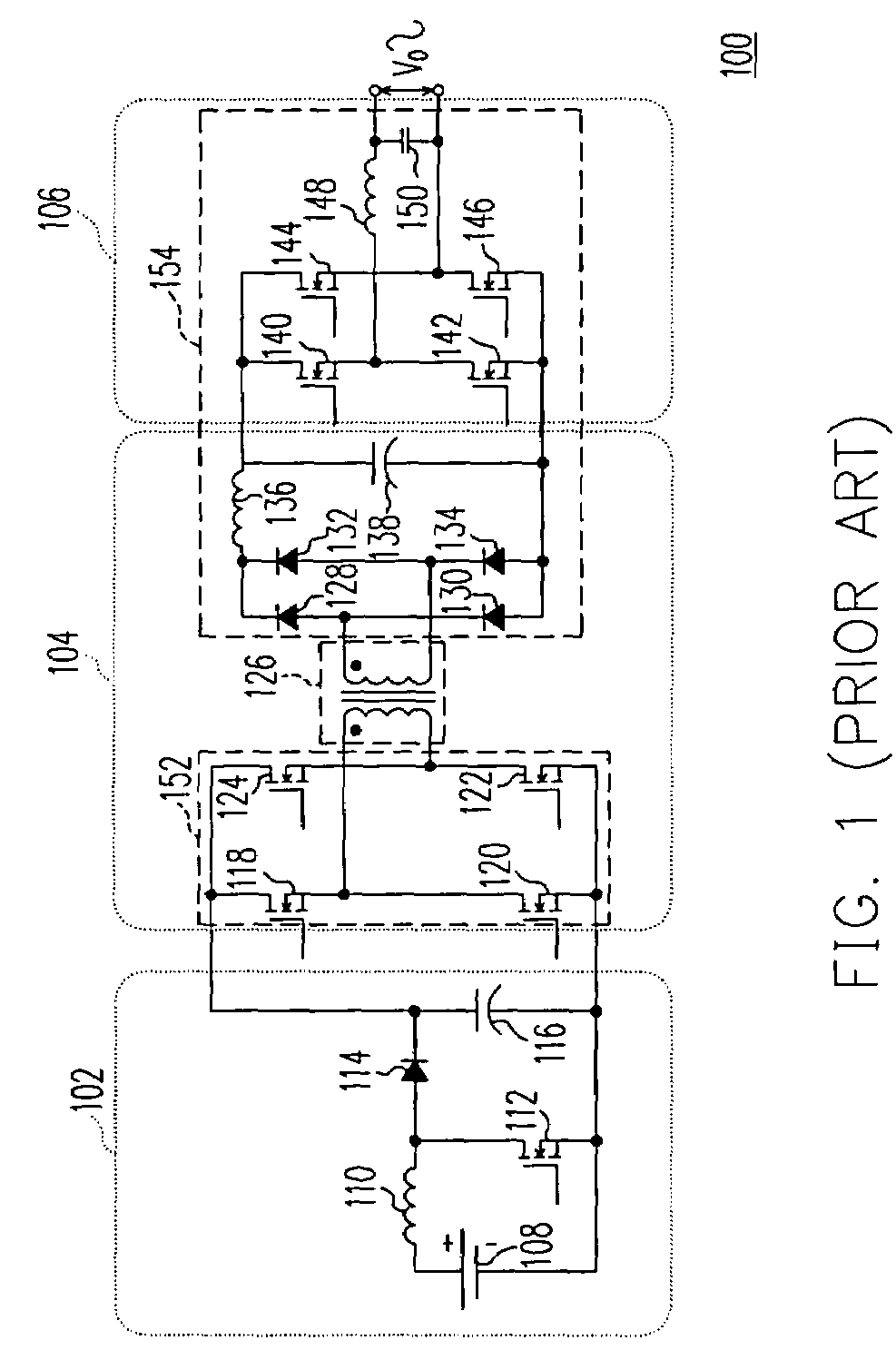DC-AC converter
a converter and ac technology, applied in the field of electric converters, can solve the problems of increasing energy loss, reducing converting efficiency, energy consumption, etc., and achieve the effects of reducing energy loss, saving cost, and improving converting efficiency
- Summary
- Abstract
- Description
- Claims
- Application Information
AI Technical Summary
Benefits of technology
Problems solved by technology
Method used
Image
Examples
Embodiment Construction
[0028]FIG. 2A is a circuit diagram of a DC-AC converter, according to an embodiment of the invention, wherein the DC-AC converter includes a voltage boost module 202, a DC-AC converting module 204 and a feedback module 216.
[0029]The voltage boost module 202 of the embodiment includes a voltage bypass circuit 208 and a voltage boost circuit 206. Here the voltage boost circuit 206, in fact, can be seen as a dual voltage boost circuit, which includes inductors 224 and 226, diodes 218 and 220, a capacitor 232, a first transistor switch 228 and a second transistor switch 230.
[0030]Wherein, one end of each of the inductors 224 and 226 is coupled with the positive end of a DC input power 258, and another end thereof is coupled with the node between diodes 218 and 220. One end of the first transistor switch 228 is coupled with the common end of the inductor 224 and the diode 218, and the other end thereof is coupled with the common end of the capacitor 232 and the DC input power 258.
[0031]T...
PUM
 Login to View More
Login to View More Abstract
Description
Claims
Application Information
 Login to View More
Login to View More - R&D
- Intellectual Property
- Life Sciences
- Materials
- Tech Scout
- Unparalleled Data Quality
- Higher Quality Content
- 60% Fewer Hallucinations
Browse by: Latest US Patents, China's latest patents, Technical Efficacy Thesaurus, Application Domain, Technology Topic, Popular Technical Reports.
© 2025 PatSnap. All rights reserved.Legal|Privacy policy|Modern Slavery Act Transparency Statement|Sitemap|About US| Contact US: help@patsnap.com



